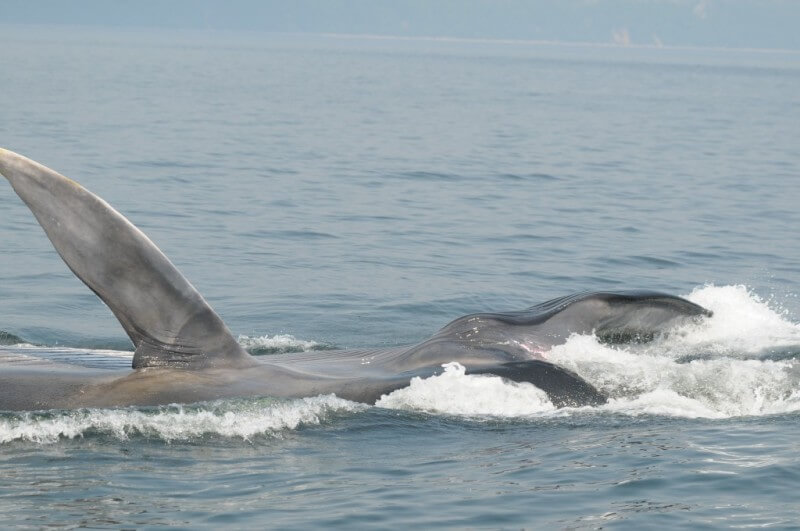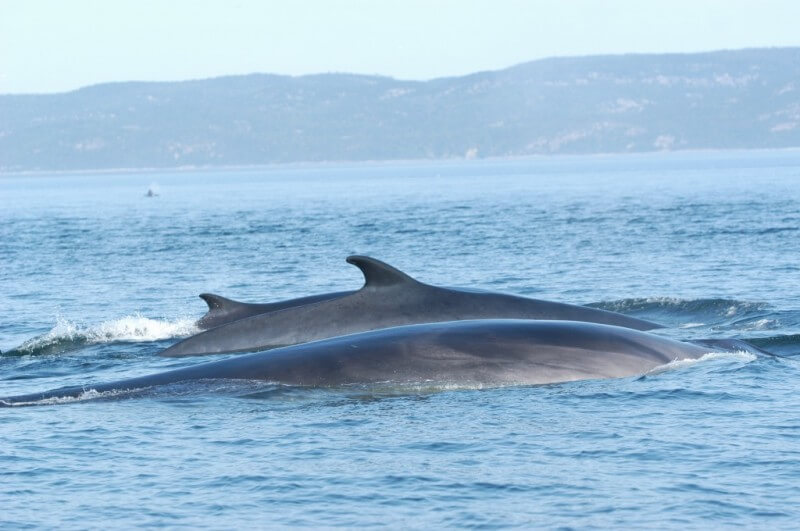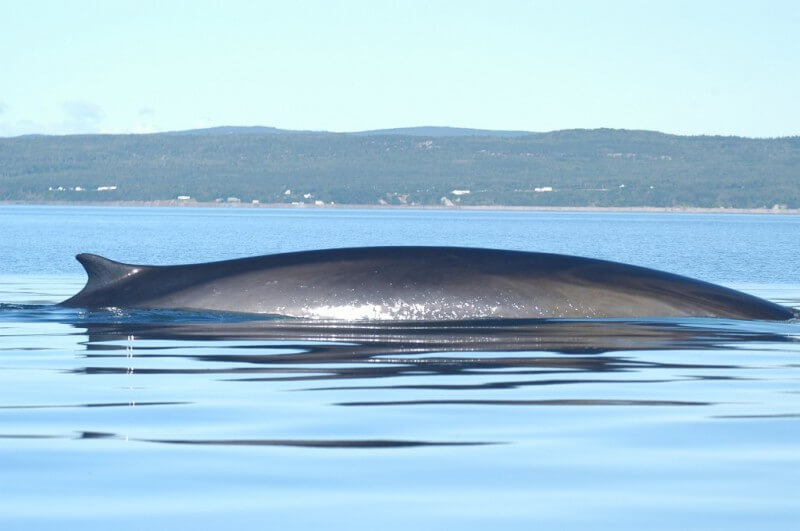Feeding
The fin whale is a gulper, with a varied diet composed of planktonic crustaceans and small schooling fish (herring, capelin). It sometimes surface feeds where it performs circular or semi-circular manoeuvres, rolling its body onto its side (often the right side). Indeed, it is the only cetacean and one of the few vertebrates to exhibit an asymmetrical colour pattern on its head. On the right side, the lower jaw, oral cavity, tongue and throat are lighter in colour, bordering on white. Thus, the fin whale is believed to play with this contrast and light, either to frighten and herd its prey, or to better camouflage itself. One detailed study on fin whale behaviour compared to that of other rorqual species with no asymmetry did not allow either of these assumptions to be corroborated. This asymmetry might constitute an original trait of the fin whale, not offering any benefit in particular.
On the surface
Breathing sequences can comprise 5 to 10 blows. When a fin whale breaches – which is rare – its body lands on its belly or flank with a loud splash. It generally doesn’t show its tail when diving, a flexion movement of its supple body being sufficient to nosedive to the ocean depths.
Diving
The fin whale shows a marked preference for shallow coastal waters (100-200 m deep) and rugged seabeds. It dives to various depths (from just below the surface to up to 230 m), with patterns linked to various activities (diurnal and nocturnal, travel, rest, exploration, feeding).
Social
They are observed alone, in pairs or in temporary groups the size of which varies from 3 to over 20 individuals. The presence of food and tidal cycles influence their dispersion and grouping. A detailed study conducted from 1994 to 1996 on their behaviour in the Estuary showed that they formed tight groups at high tide in the tide rips, swimming in a synchronized and dynamic manner. At low tide, they were rather dispersed and relaxed.
Vocalization
The sounds emitted by fin whales are in the low-frequency range (below 120 Hz). Their repertoire is dominated by short pulsing sounds of decreasing frequency (23 Hz to 18 Hz), singular or emitted in sequence. Produced primarily in winter, these sequences may be used for mating rituals. The highest-frequency sounds seem to be used for short-distance communication. According to one study, very low-frequency pulsing sounds appear to be used for echolocation as well.









